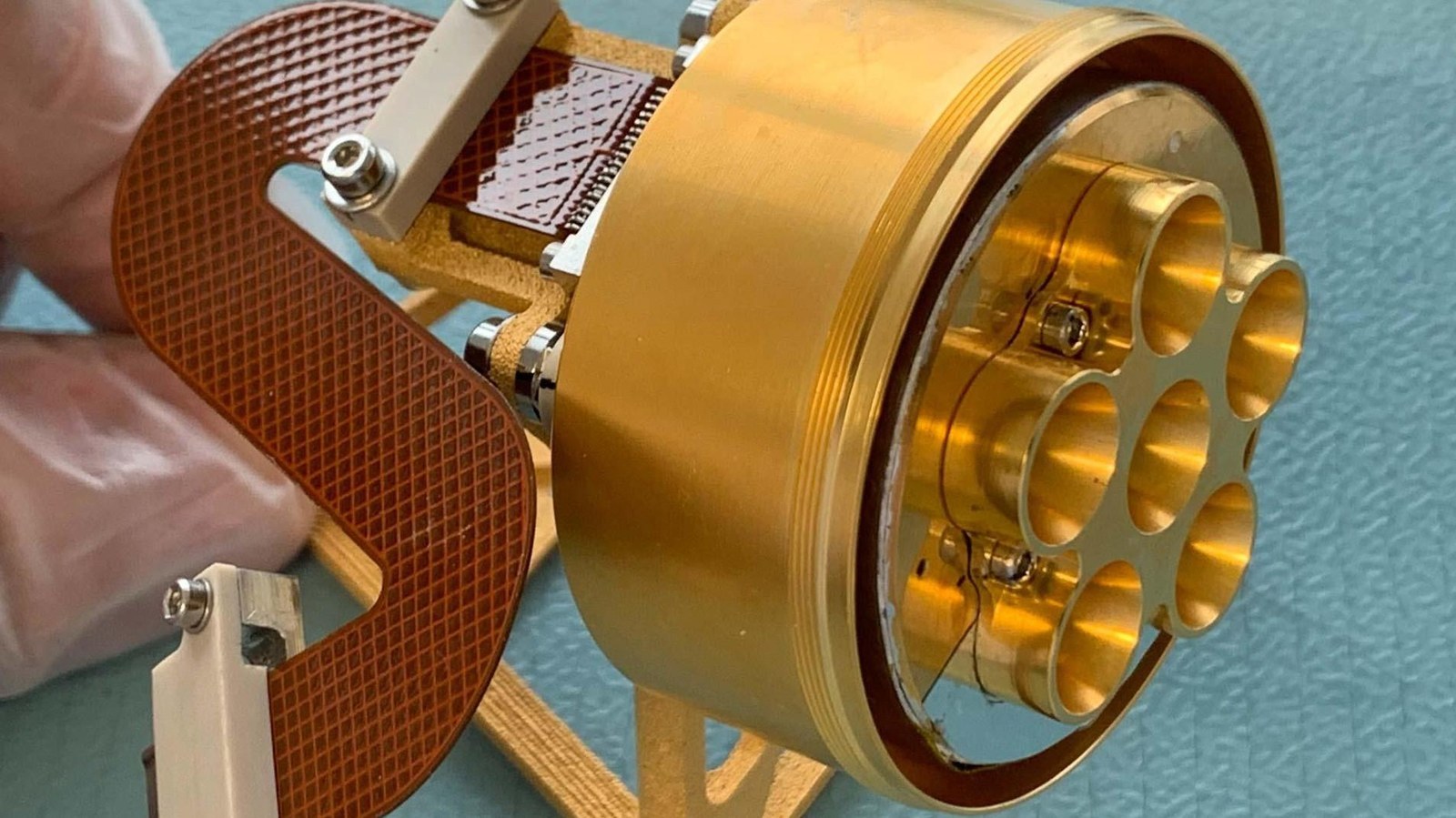The miniRAD infrared radiometer


The DLR Institute of Planetary Research's miniRAD radiometer will measure the radiation emanating from the surface of the martian moon Phobos in six thermal infrared wavelength ranges in order to determine its temperature and thermophysical properties. Information on the mineralogical composition of the surface material will also be obtained. The instrument's field of view covers an approximately 50-centimetre diameter on the ground.
Measuring the lowest temperatures
The primary objective of the miniRAD radiometer's scientific measurements is to determine Phobos' surface temperature, which, in addition to the irradiation conditions, depends strongly on the thermal properties of the observed materials. It is the thermal conductivity of the material above all that determines how quickly and how strongly the surface reacts to changes in irradiation. Temperatures between minus 150 and plus 20 degrees Celsius are expected during the course of the Phobos day, which lasts 7.8 hours. Measuring the low night temperatures is particularly demanding for the instrument, as the power of the emitted infrared radiation drops sharply will falling temperature.
However, it is precisely the cold night temperatures that are of the highest scientific interest. The radiation of the energy collected during the day is linked to the material properties of the surface, but direct solar radiation interferes with the measurements and should be ignored when the data are evaluated.
Thermopile sensors used by the MASCOT and InSight missions will be used to measure the low night-time temperatures and have been even further optimised. The selection of the infrared filters was also adapted in order to be able to measure the radiated energy at wavelengths beyond 14 micrometres.
The temperature of the sensor head (Figure 1) must be homogeneous and very stable, which places high demands on the thermal design of the instrument. To achieve this, coatings and materials were specially selected to optimally decouple the sensor head thermally from the rest of the rover.
To ensure the stability of the sensors during the 11-month journey and to validate the calibration of the sensors, the rover carries a dedicated calibration radiator (Figure 2). This radiator is mounted within the field of view of the miniRAD instrument during the flight phase. The temperature of the radiator can be controlled to provide a precisely defined radiation flux that will be used to check the sensitivity of the sensors.
Measurements on different scales
Three channels of the miniRAD instrument will be used to measure the surface temperature on Phobos. Three further channels have been designed to characterise the optical properties of the surface. In particular, these channels will be used to determine the emissivity of the surface materials. The data gathered will complement the data obtained using the Raman spectrometer and allow for an initial mineralogical characterisation.
The miniRAD instrument will be used to conduct measurements on a scale of 50 centimetres, which will close the data gap between the observations made using the MMX orbiter and the measurements made of the samples brought to Earth. The MMX mission will thus provide three scales of spectral data on the surface material of Phobos. This will make it possible to characterise the material over spatial scales ranging from millimetres to kilometres.
Mobility and target selection
The rover's ability to move to different locations on the surface means that the thermal and mineralogical properties of different geological units can be determined separately. The differences or similarities between the properties of granular loose material, referred to as regolith, and rock fragments are of particular interest. The identification of possible differences in the geological stratification and spatial spectral differences are also of high scientific interest.
Since the thermal properties of surfaces are closely related to their mechanical properties, the miniRAD measurements will also allow researchers to draw conclusions about how the regolith formed, its predominant grain size, its formation history and the process of deposition. Information will also be obtained on the mechanical strength of rock fragments within the rover's range.
MMX – Martian Moons eXploration
MMX is a mission of the Japanese space agency JAXA with contributions from NASA, ESA, CNES (the French space agency) and DLR. CNES (Centre National d'Études Spatiales) and the German Aerospace Center (Deutsches Zentrum für Luft- und Raumfahrt; DLR) are jointly contributing a 25-kilogram rover to the Martian Moons eXploration Mission (MMX). The Franco-German MMX rover is being designed and built under the joint leadership of CNES and DLR. In particular, DLR is responsible for the development of the rover's landing gear, including the lightweight body, as well as the entire uprighting and locomotion system. DLR is also contributing the connection adapter to the MMX spacecraft and providing a Raman spectrometer and a radiometer as scientific experiments. These will analyse the surface composition and texture on Phobos. CNES is making significant contributions with camera systems for spatial orientation and exploration on the surface, as well as for the study of mechanical soil properties. CNES is also developing the rover's central service module, including the on-board computer and the power and communications system. After the launch of the MMX mission, the rover will be operated by CNES control centres in Toulouse (France) and DLR in Cologne (Germany).
For DLR, the institutes of System Dynamics and Control, Composite Structures and Adaptive Systems, of Space Systems, of Optical Sensor Systems, of Planetary Research, for Software Technology and the Microgravity User Support Center (MUSC) are also involved under the leadership of the DLR Institute of Robotics and Mechatronics.
The MMX mission is a continuation of an already long-standing successful cooperation between JAXA, CNES and DLR. It builds on the previous mission Hayabusa2, in which JAXA sent a spacecraft to the asteroid Ryugu with the German-French MASCOT lander on board. On 3 October 2018, MASCOT landed on Ryugu and sent spectacular images of a landscape ridden with boulders and rocks, and virtually no dust. Hayabusa2 collected samples from Ryugu and brought them to Earth on 6 December 2020.
